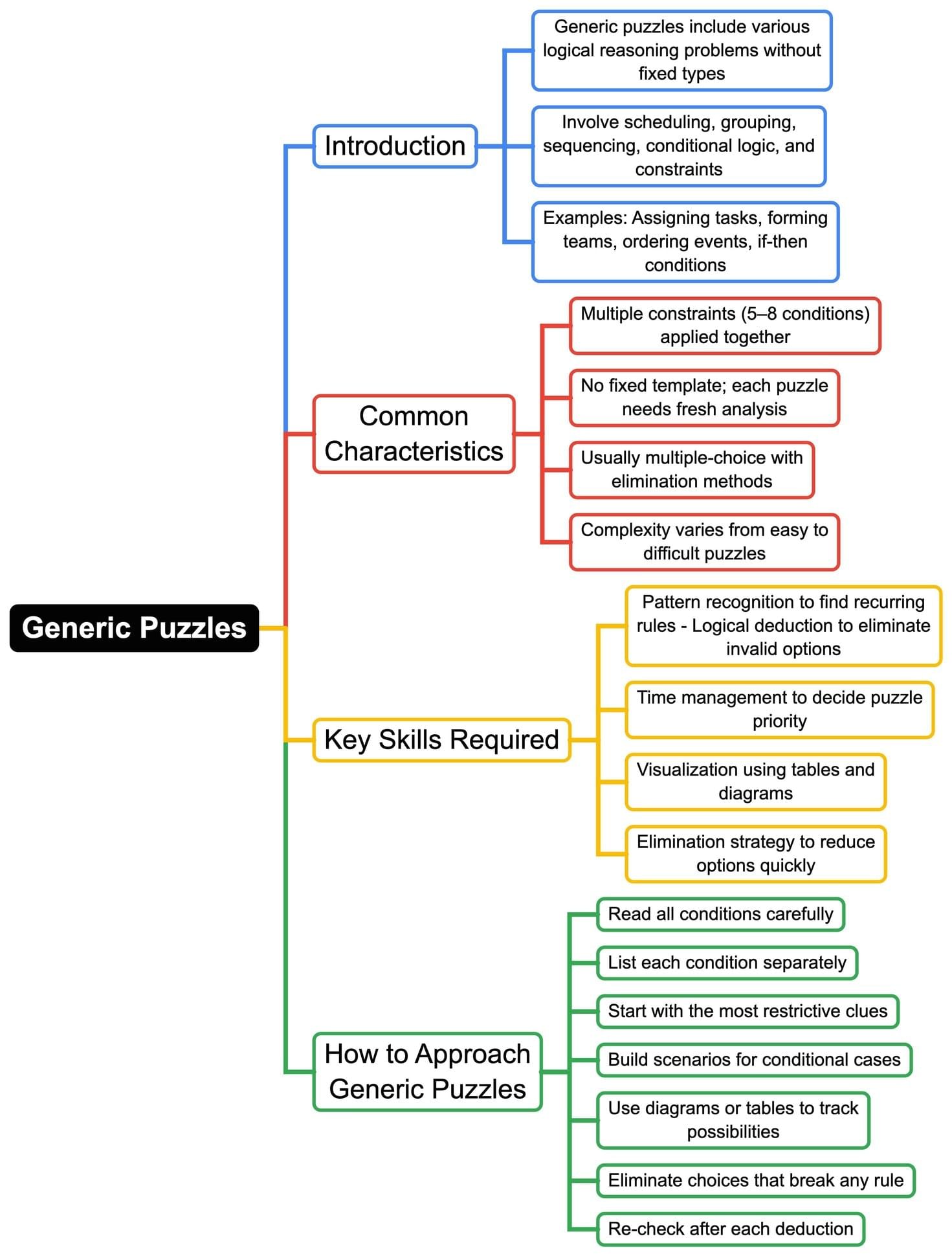CAT Exam > CAT Notes > Logical Reasoning (LR) and Data Interpretation (DI) > Mind Map: Generic Puzzles
Mind Map: Generic Puzzles | Logical Reasoning (LR) and Data Interpretation (DI) - CAT PDF Download

The document Mind Map: Generic Puzzles | Logical Reasoning (LR) and Data Interpretation (DI) - CAT is a part of the CAT Course Logical Reasoning (LR) and Data Interpretation (DI).
All you need of CAT at this link: CAT
|
77 videos|180 docs|96 tests
|
FAQs on Mind Map: Generic Puzzles - Logical Reasoning (LR) and Data Interpretation (DI) - CAT
| 1. What are generic puzzles in the context of the CAT exam? |  |
Ans.Generic puzzles in the context of the CAT exam refer to logical reasoning challenges that test a candidate's analytical skills and problem-solving abilities. These puzzles often involve scenarios that require candidates to use deductive reasoning, pattern recognition, and critical thinking to arrive at answers. They may include arrangements, sequences, or scenarios that need to be interpreted to solve a given problem.
| 2. How can I effectively prepare for generic puzzles in the CAT exam? |  |
Ans.Effective preparation for generic puzzles involves practicing a variety of puzzle types, such as seating arrangements, blood relations, and logical sequences. Candidates should familiarize themselves with common puzzle formats and develop strategies for quickly identifying relationships and patterns. Regular practice through mock tests and previous years' question papers can also enhance problem-solving speed and accuracy.
| 3. Are there any specific strategies to solve generic puzzles quickly? |  |
Ans.Yes, several strategies can help solve generic puzzles quickly. First, read the puzzle carefully to understand the context. Next, identify keywords that indicate relationships or conditions. Creating diagrams or tables can help visualize the problem. Breaking down the information into smaller parts and eliminating impossible options can also streamline the solving process. Lastly, practice regularly to improve both speed and understanding of different puzzle types.
| 4. What types of generic puzzles are commonly found in the CAT exam? |  |
Ans.Common types of generic puzzles in the CAT exam include seating arrangement puzzles, which involve determining the positions of individuals based on given clues; blood relation puzzles that analyze family relationships; and ranking puzzles, which require ordering items based on certain criteria. Additionally, logical reasoning questions involving sequences or patterns are frequently included.
| 5. How important are generic puzzles in the overall CAT exam scoring? |  |
Ans.Generic puzzles are important in the CAT exam as they contribute to the logical reasoning and analytical ability sections, which are critical components of the overall score. Mastery of these puzzles can significantly enhance a candidate's performance, as they not only test reasoning skills but also the ability to work under time constraints, which is essential for success in the exam.
Related Searches
















